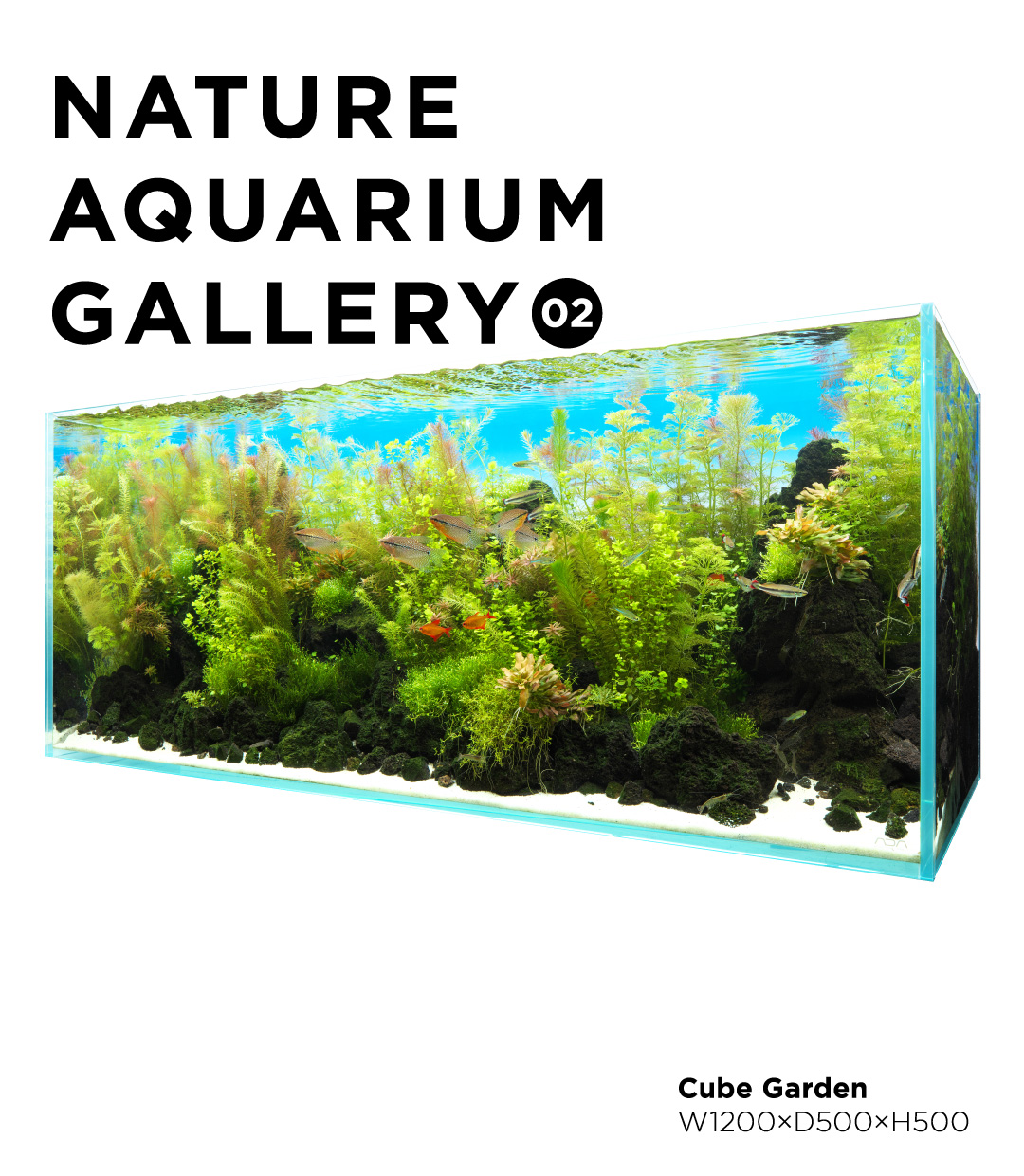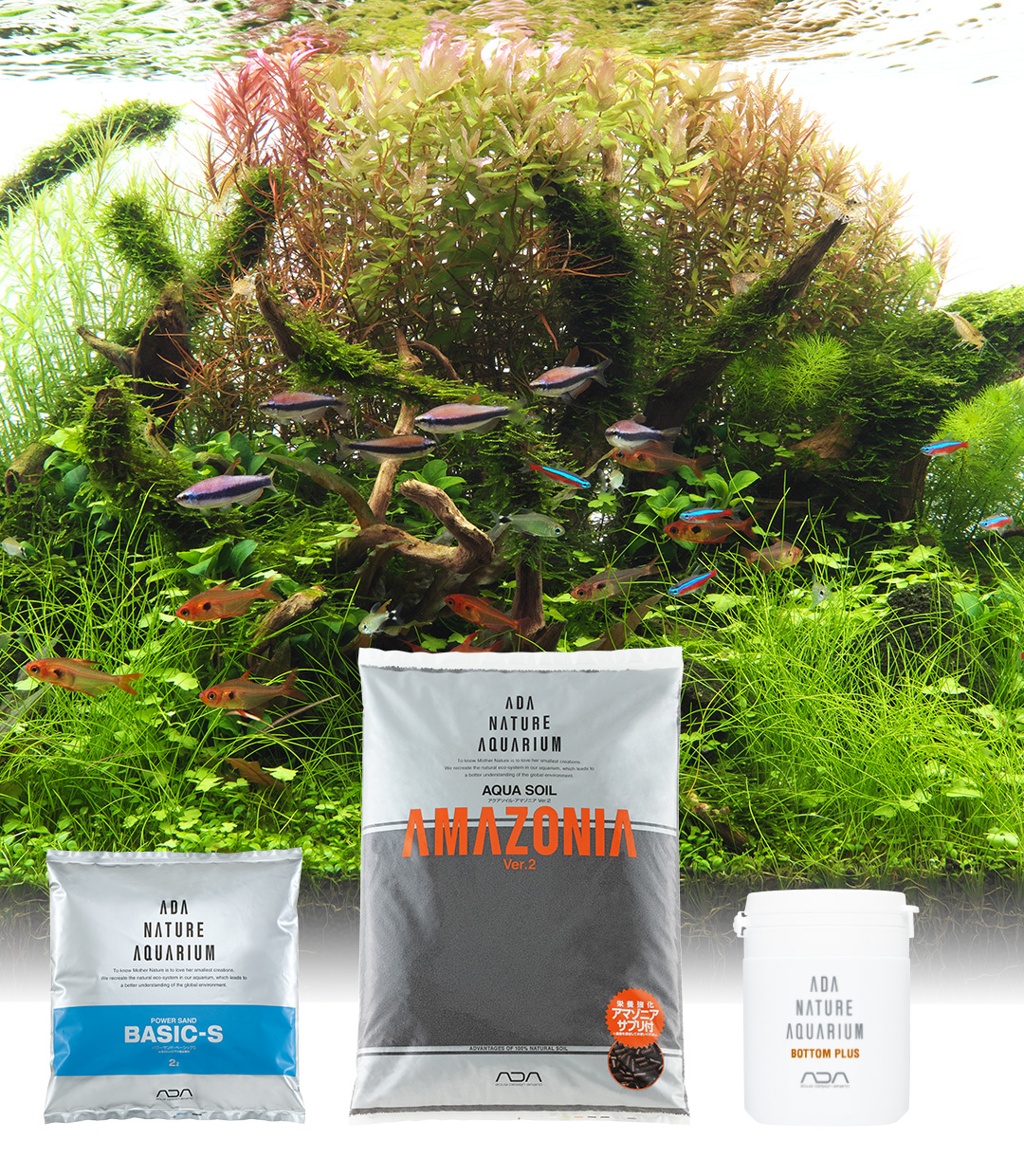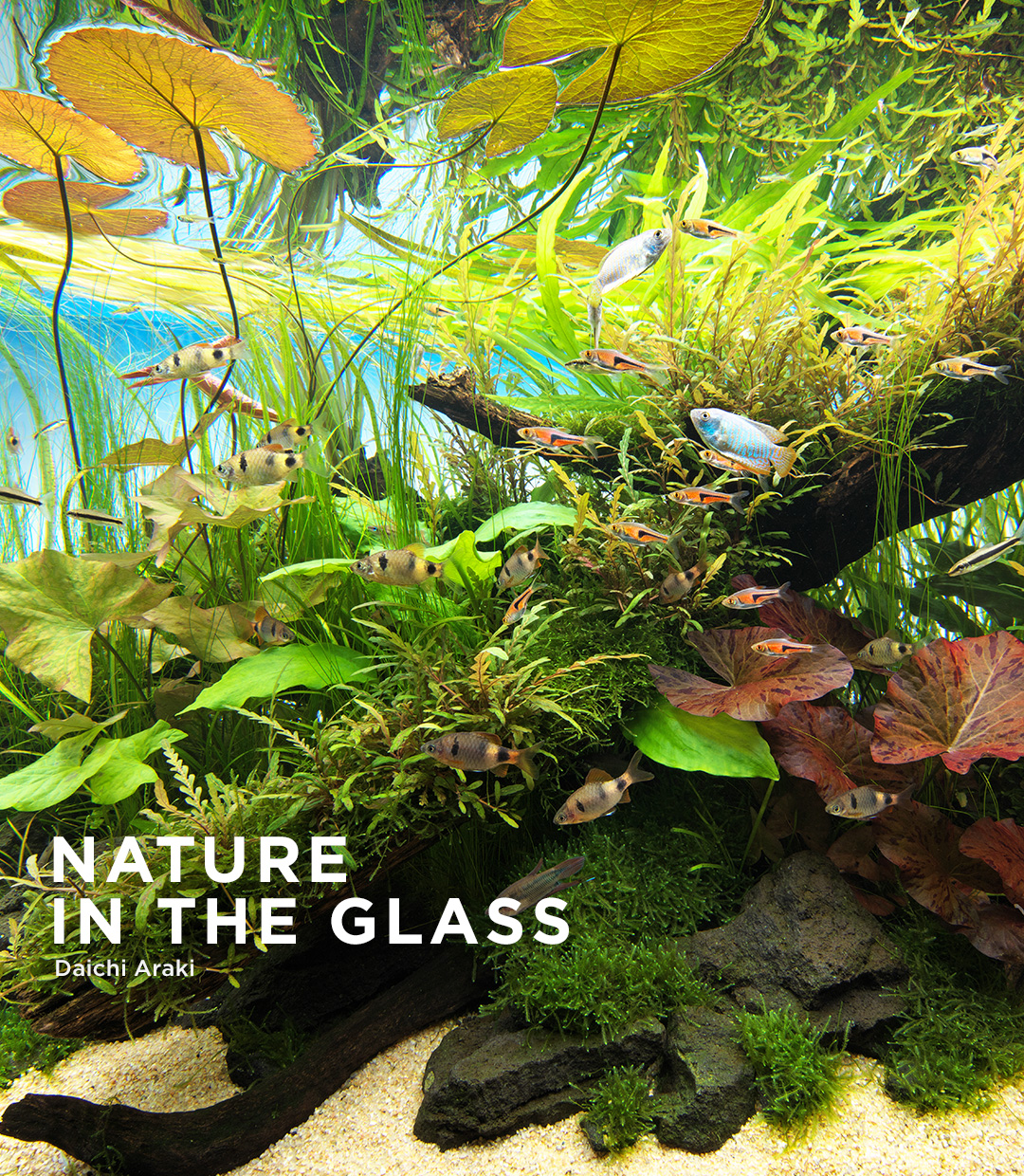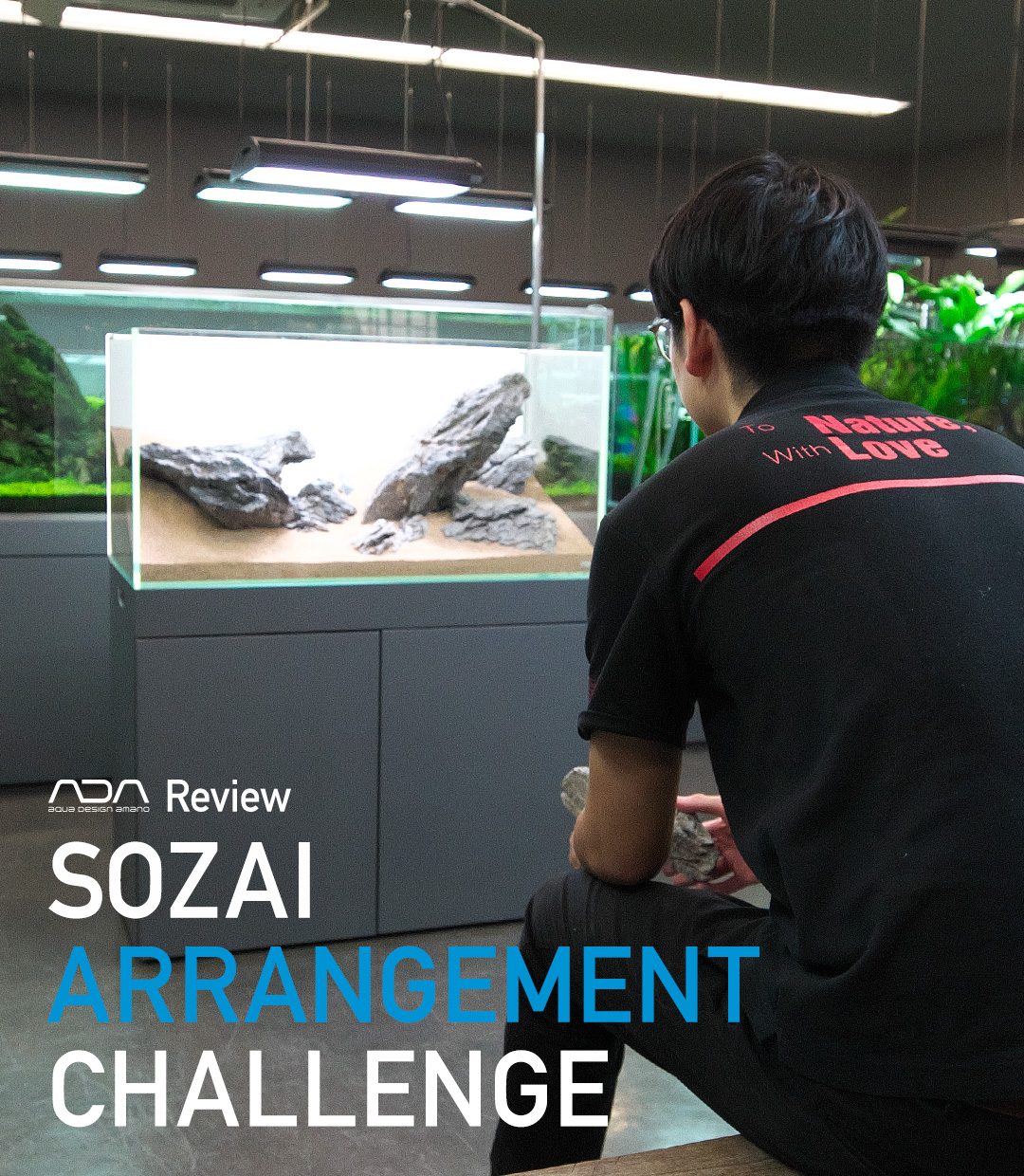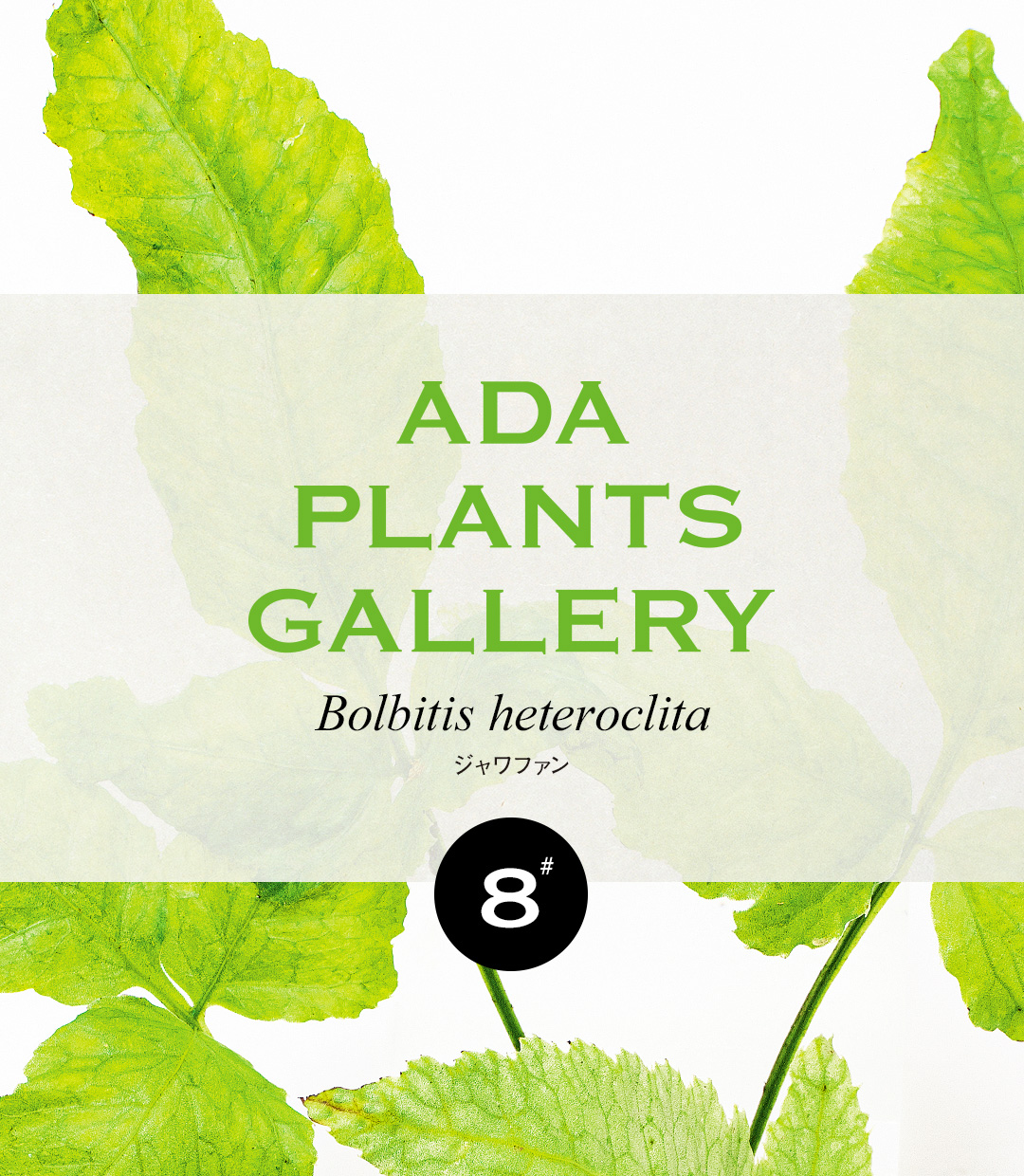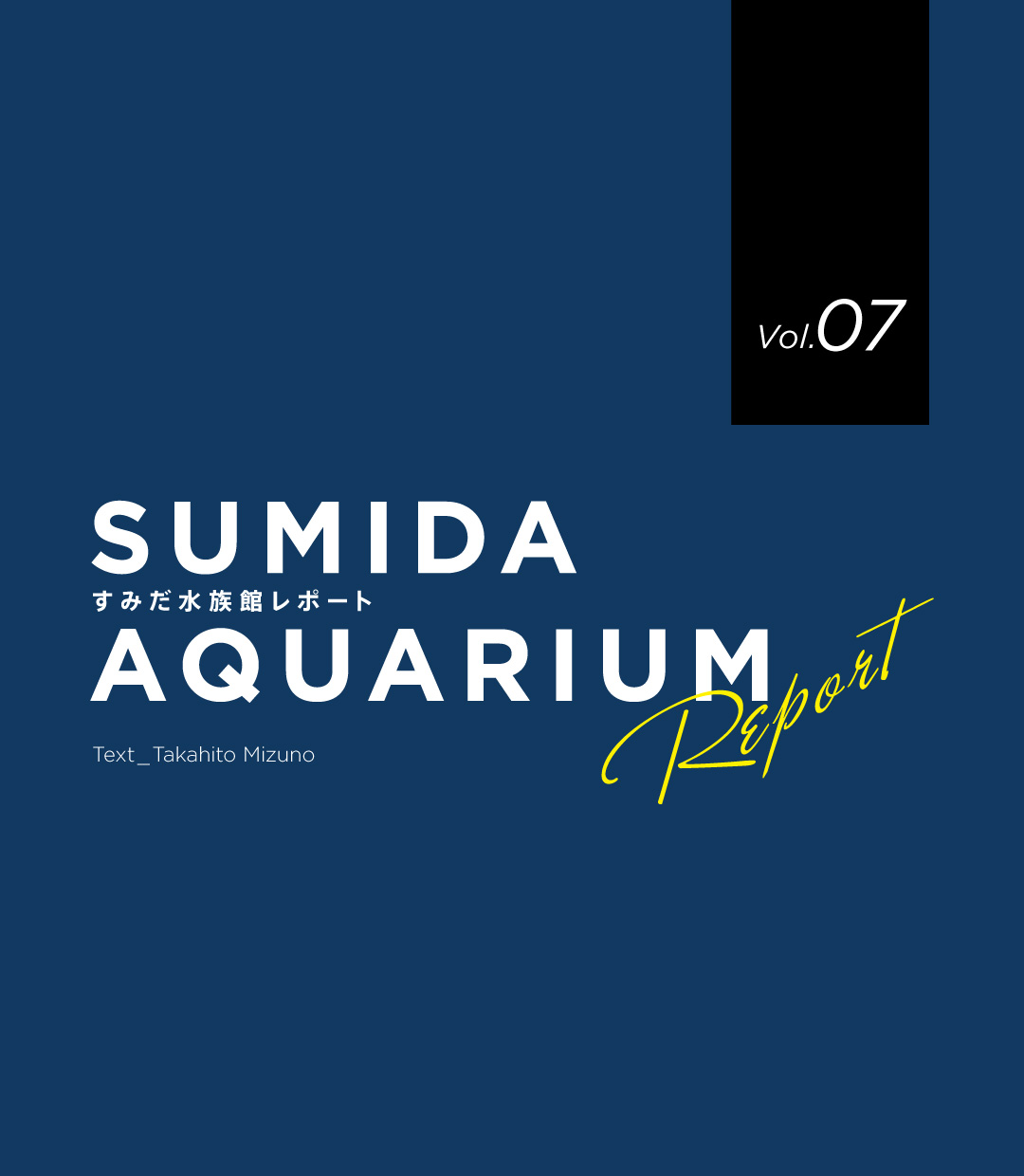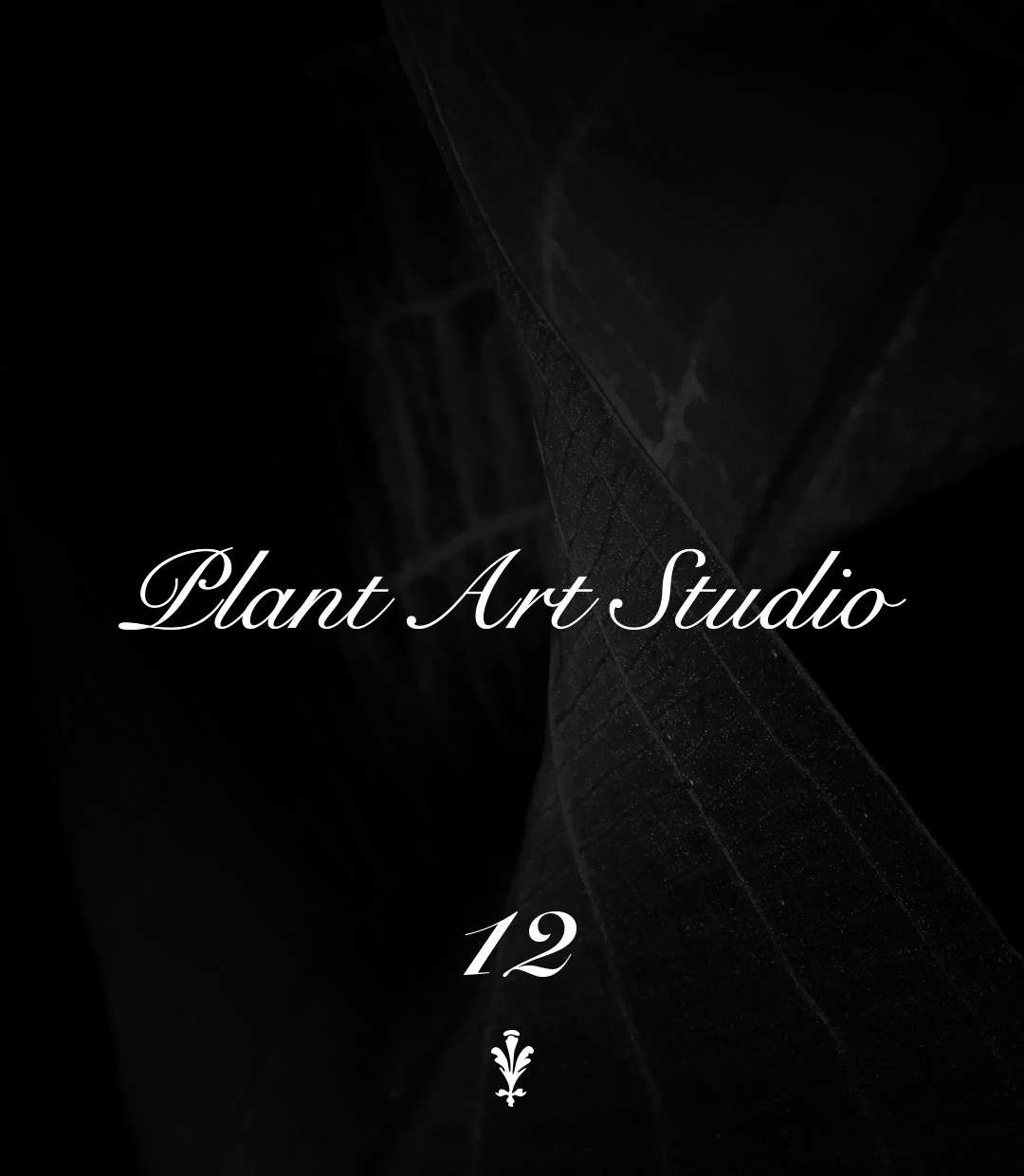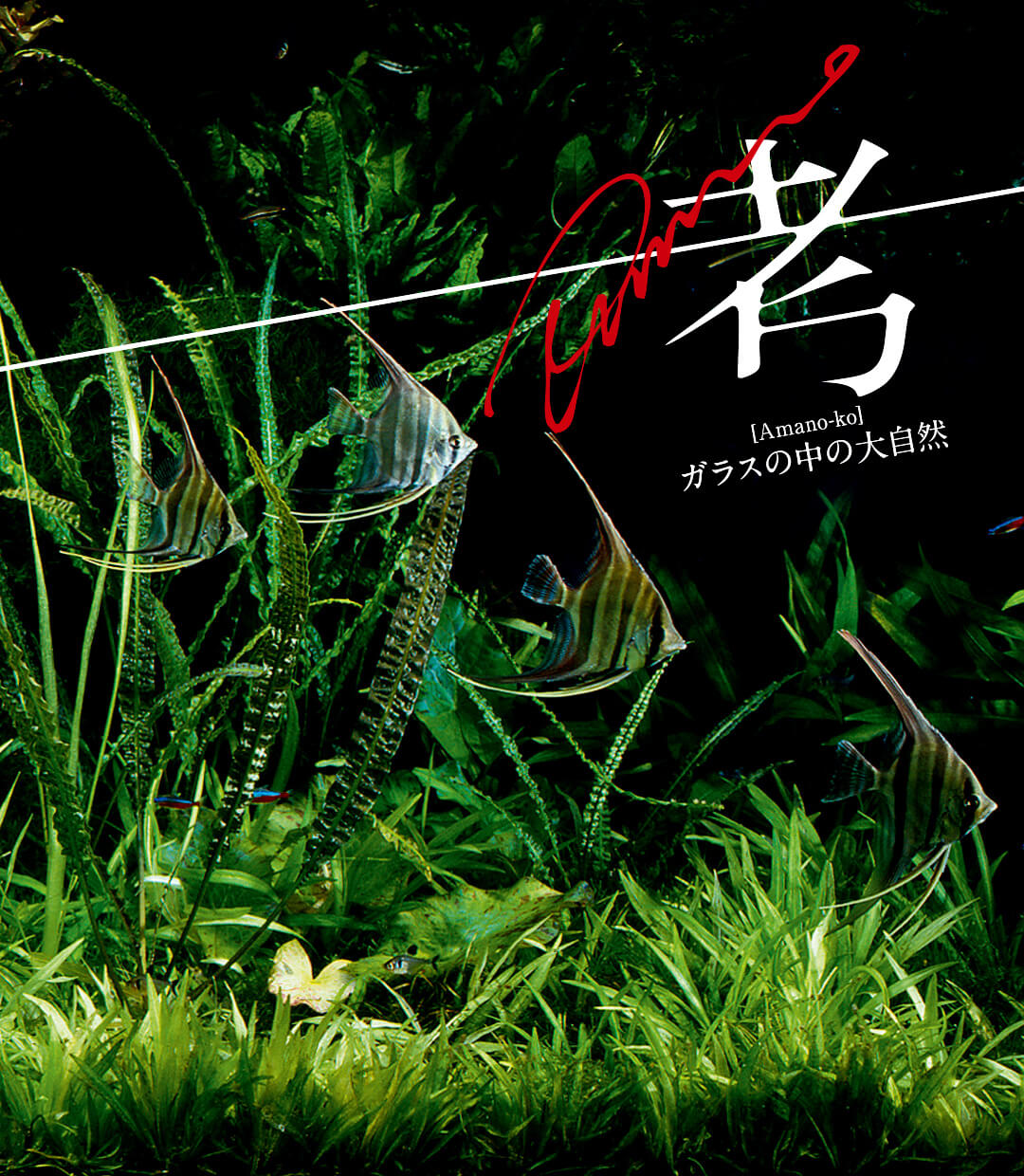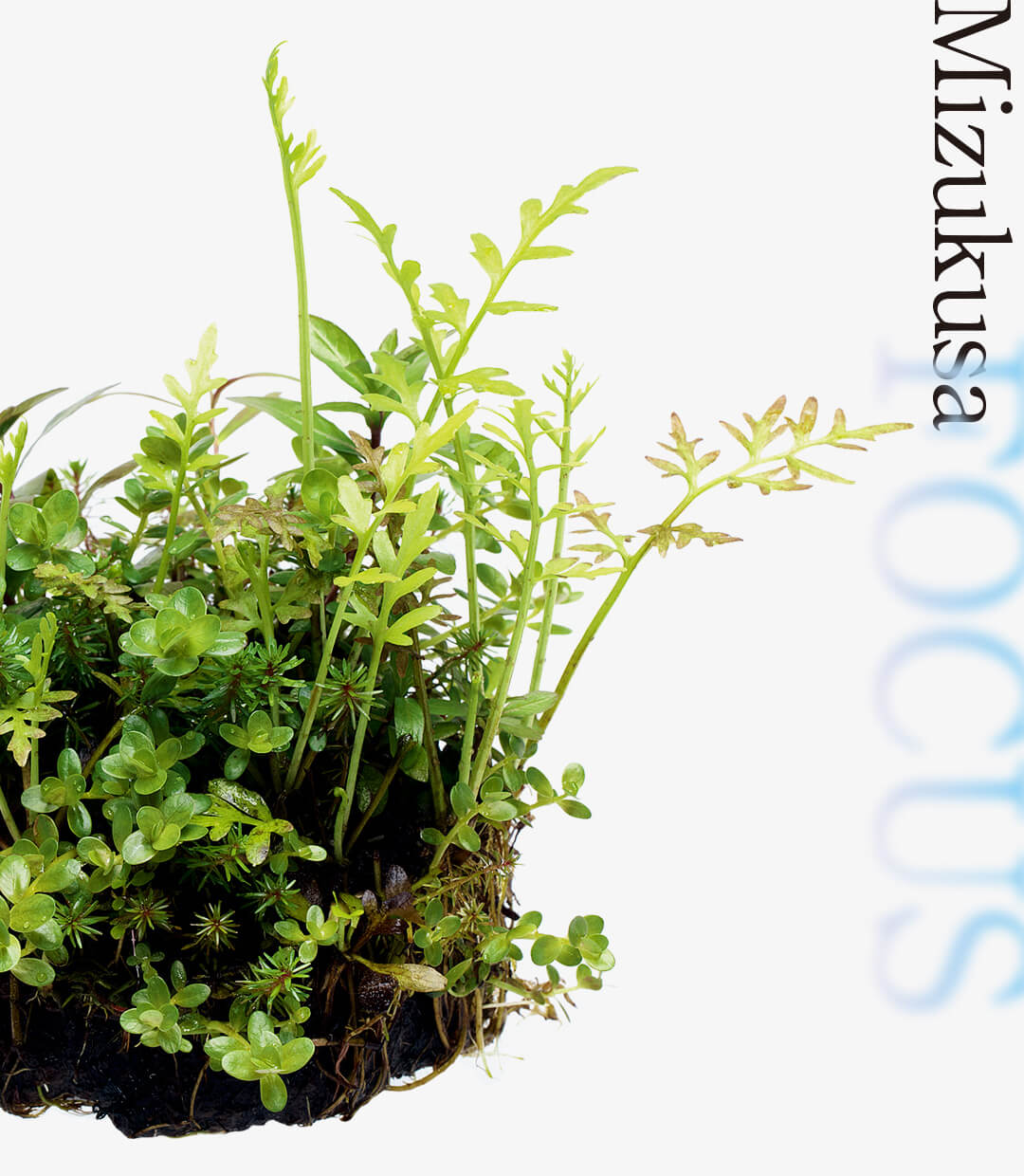NATURE IN THE GLASS ‘Habitat’
A story of aquatic plants and fish that begins around driftwood that has been drifted to a tributary in a dense forest
I imagined a scene where trees are broken and become driftwood in the innermost part of the Southeast Asian jungles, and they drifted to a craggy place. It would be great if you could feel a story from the aquascape that aquatic plants form clusters as putting reliance on the driftwood, and fish start living there as their habitat. In a place where plenty of light shines, the Nymphaea family grows, and in the shade of driftwood, shade tolerant aquatic plants like Lagenandra become dominant, and they compete for survival while each one of them grows separately. Thriving aquatic plants and the shade of driftwood give moderate comfort to fish, and I think I was able to create a great habitat.
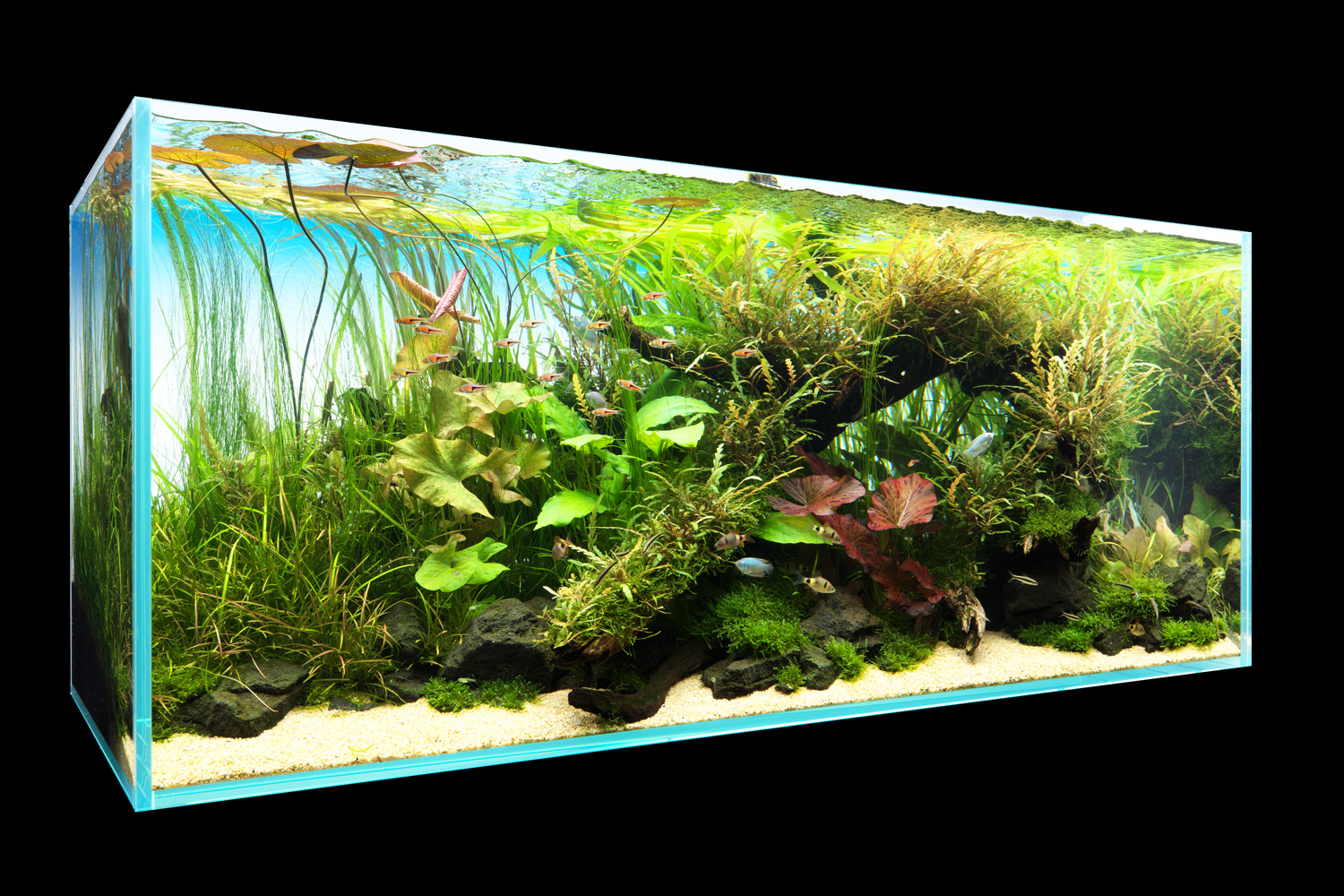
DATA
Shooting date: September 7th, 2021(ADA)
Creator: Daichi Araki
Aquarium: Cube Garden W120×D50×H50(cm)
Lighting: Solar RGB x 2, turned on for 8.5 hours per day
Filter: Super Jet Filter ES-1200(Bio Rio G)
Material: Horn Wood, Sansui Stone
Substrate: Aqua Soil – Amazonia, Aqua Soil – Amazonia ver.2, Power Sand Advance M, Bacter 100, Clear Super, Tourmaline BC, Colorado Sand
CO2: Pollen Glass Beetle 40Ø, 5 bubbles per second via CO2 Beetle Counter (using Tower)
Aeration: 15.5 hours after the light is turned off using Lily Pipe P-6
Additives: Green Brighty Neutral K, Green Brighty Mineral, Green Brighty Iron, Green Brighty Nitrogen
Water change: 1/3 once a week
Water quality: Temperature: 25ºC; pH: 6.2; TH: 50 mg/L
Plant
Wabi-Kusa Lagenandra meeboldii ‘Vinay Chandra’
Wabi-Kusa Lagenandra meeboldii ‘Red’
Wabi-Kusa Lagenandra meeboldii ‘Green’
Lagenandra meeboldii ‘Vinay Chandra’
Lagenandra meeboldii ‘Red’
Lagenandra meeboldii ‘Green’
Nymphaea rubra
Nymphaea sp. ‘Green’
Hygrophila pinnatifida
Bucephalandra sp. ‘Sintang’
Hygrophila angustifolia
Polygonum sp. ‘Pink’
Blyxa sp. ‘Kimberley’
Blyxa aubertii
Cryptocoryne balansae
Cryptocoryne spiralis
Helanthium bolivianum ‘Angustifolius’
Vallisneria neotropicalis
Eleocharis vivipara
Helanthium tenellum
Trigonostigma espei
Helanthium tenellum “Madeira”
Eleocharis acicularis
Eleocharis montevidensis
Wabi-Kusa Mat Taxiphyllum barbieri
Fish
Puntius narayan
Trigonostigma espei
Microrasbora kubotai
Trichopsis vittata
Trichogaster lalius
Crossocheilus oblongus
Otocinclus sp.
Caridina multidentata
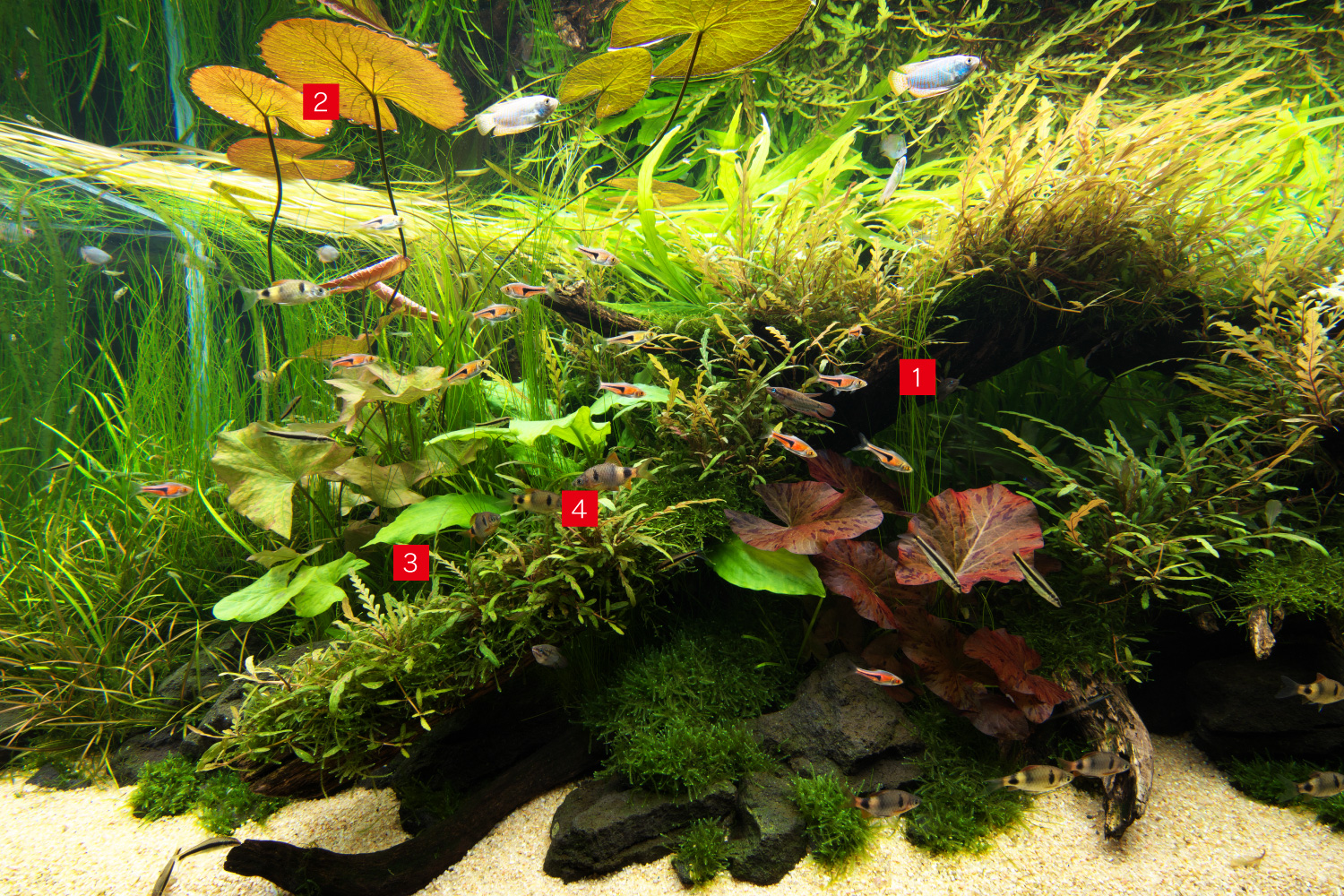
Being conscious of a habitat where small fish can live comfortably in the ecosystem
The main theme of my aquascape production is to express comfortable waterside areas for fish. Therefore, I create a space where small fish can have fun between driftwood pieces by combining stones and driftwood and by having aquatic plants grow there. The reason why I made a triangular composition by using Horn Wood and creating an arch shaped sanctuary for fish to flee into was because I wanted to clearly separate the space to hide from the space to swim around. And I made pad leaves of Nymphaea sp. to expand because fish tend to be wary when the water surface is wide.
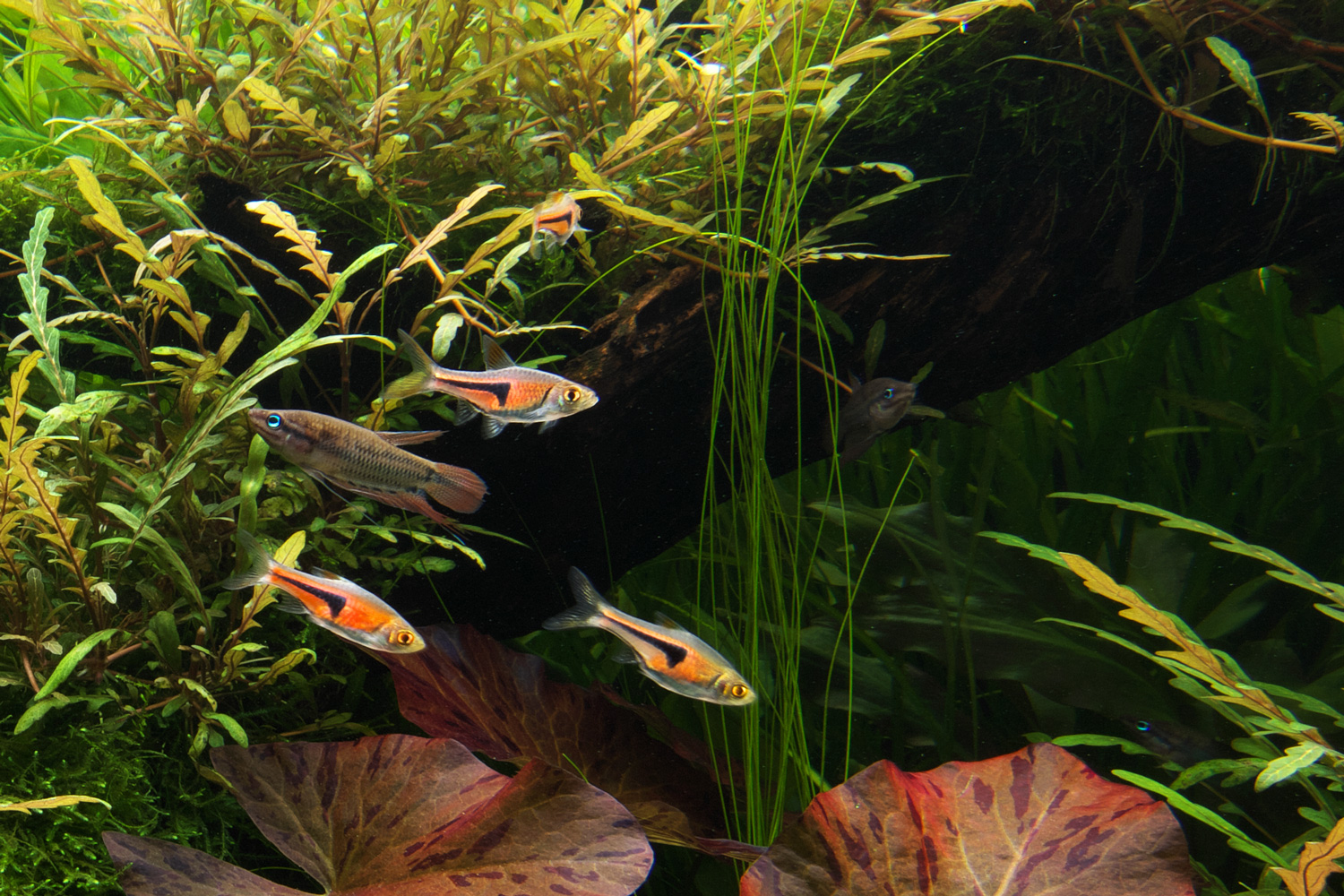
1. Coexistence of fish
The bush of aquatic plants and shade of driftwood give comfort to fish. Fish tend to be targeted by their enemies in open spaces, and it increases tension. However, the small fish seem to live peacefully here.
The bush of aquatic plants and shade of driftwood give comfort to fish. Fish tend to be targeted by their enemies in open spaces, and it increases tension. However, the small fish seem to live peacefully here.
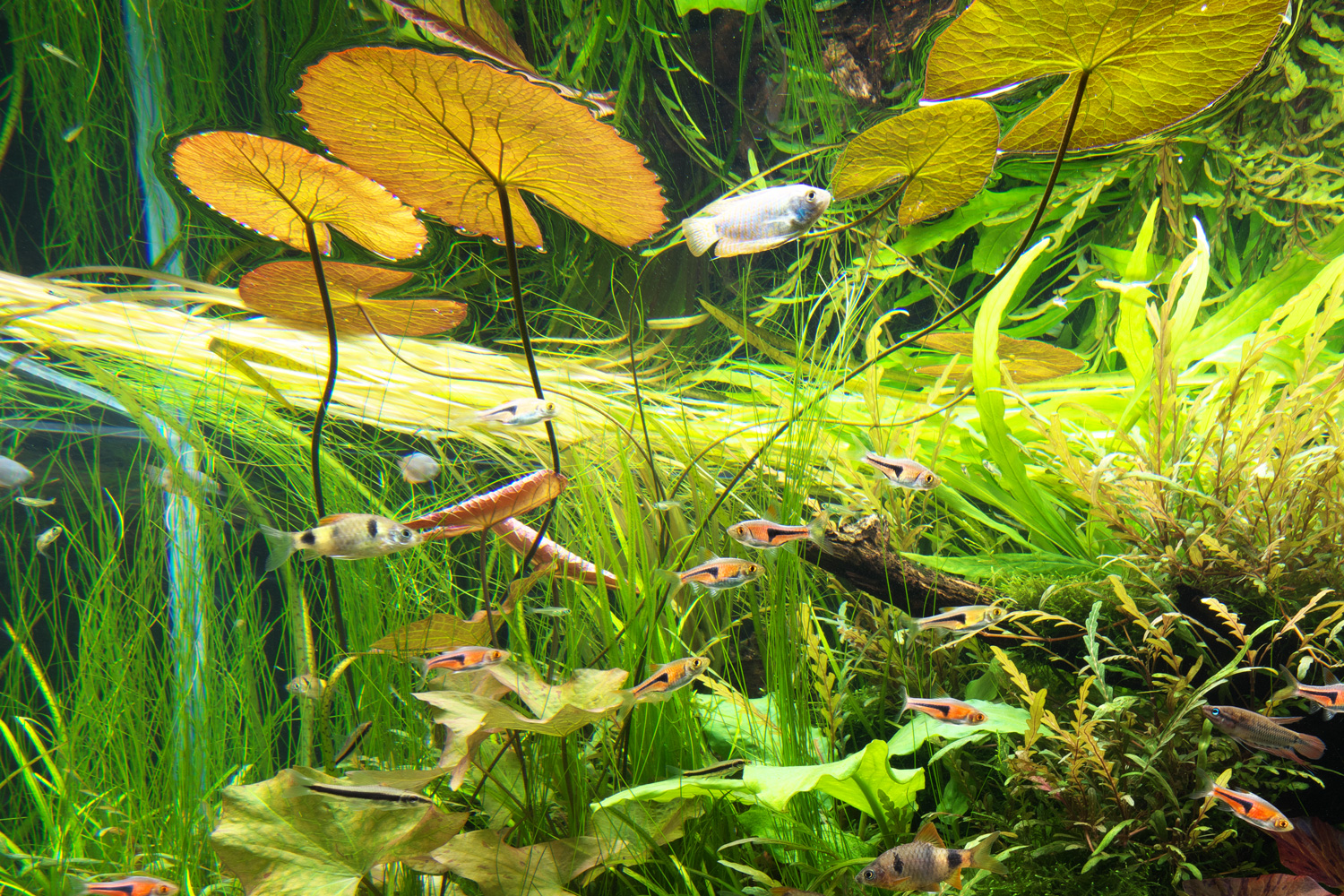
2. A sense of security under pad leaves
The Nymphaea family works effectively when you want to create an underwater feeling, and a place under the pad leaves is a comfortable place for the small fish. When you see that pad leaves stop developing, that’s the good timing for you to add Bottom Plus.
The Nymphaea family works effectively when you want to create an underwater feeling, and a place under the pad leaves is a comfortable place for the small fish. When you see that pad leaves stop developing, that’s the good timing for you to add Bottom Plus.
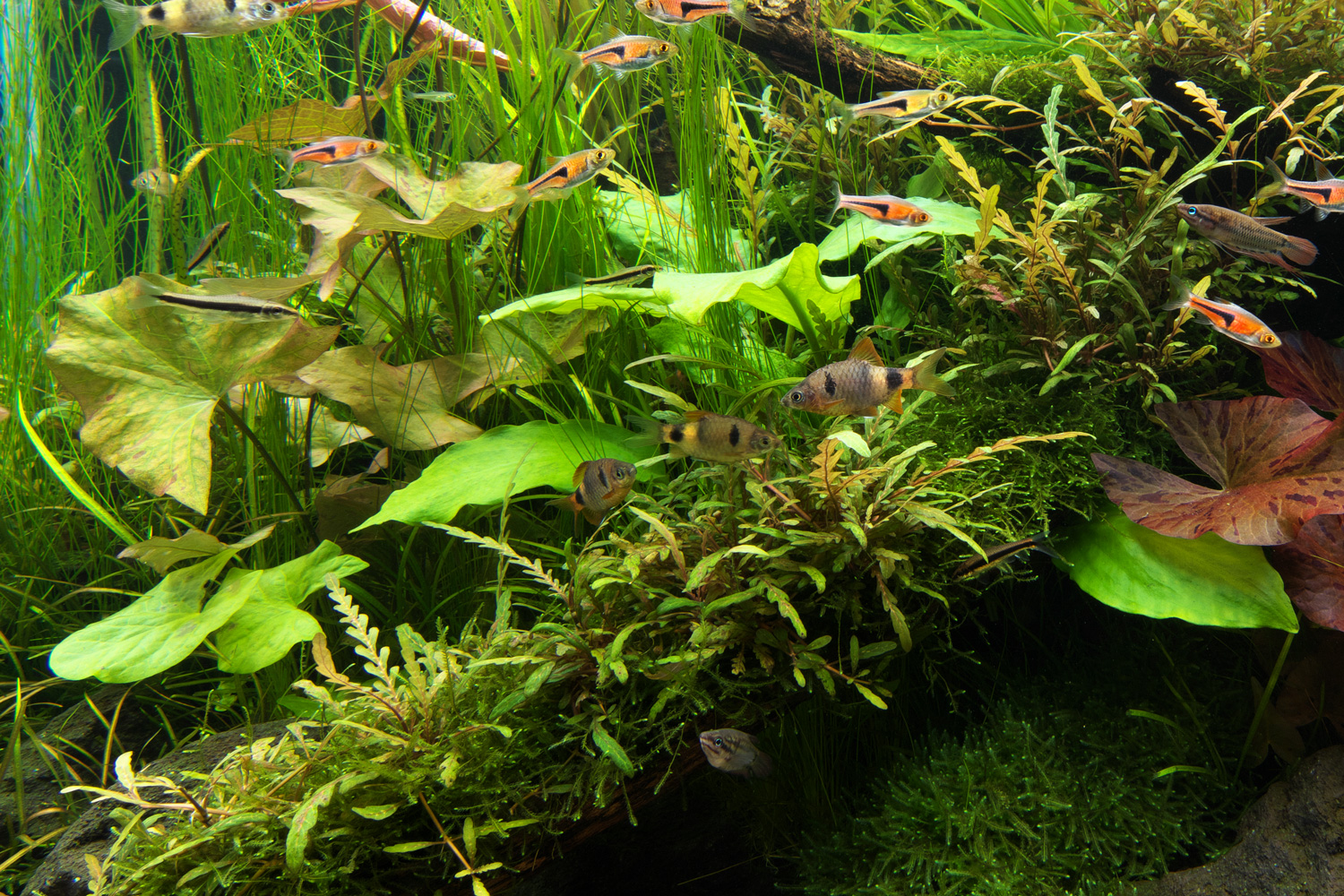
3. Natural feeling and competition for survival
By planting various aquatic plants from Lagenandra with big leaves to Eleocharis acicularis with slender leaves, I intentionally expressed competition for survival between aquatic plants while enhancing the natural feeling. I am also conscious of having a wide variety of colors.
4. Envisioning a tributary flowing out of a jungle
Aquatic plants such as Lagenandra, Nymphaea rubra, and Hygrophila pinnatifida create a Southeast Asian atmosphere. In a place where there is little light in the shade of driftwood, shade tolerant Lagenandra played an active part.
By planting various aquatic plants from Lagenandra with big leaves to Eleocharis acicularis with slender leaves, I intentionally expressed competition for survival between aquatic plants while enhancing the natural feeling. I am also conscious of having a wide variety of colors.
4. Envisioning a tributary flowing out of a jungle
Aquatic plants such as Lagenandra, Nymphaea rubra, and Hygrophila pinnatifida create a Southeast Asian atmosphere. In a place where there is little light in the shade of driftwood, shade tolerant Lagenandra played an active part.
